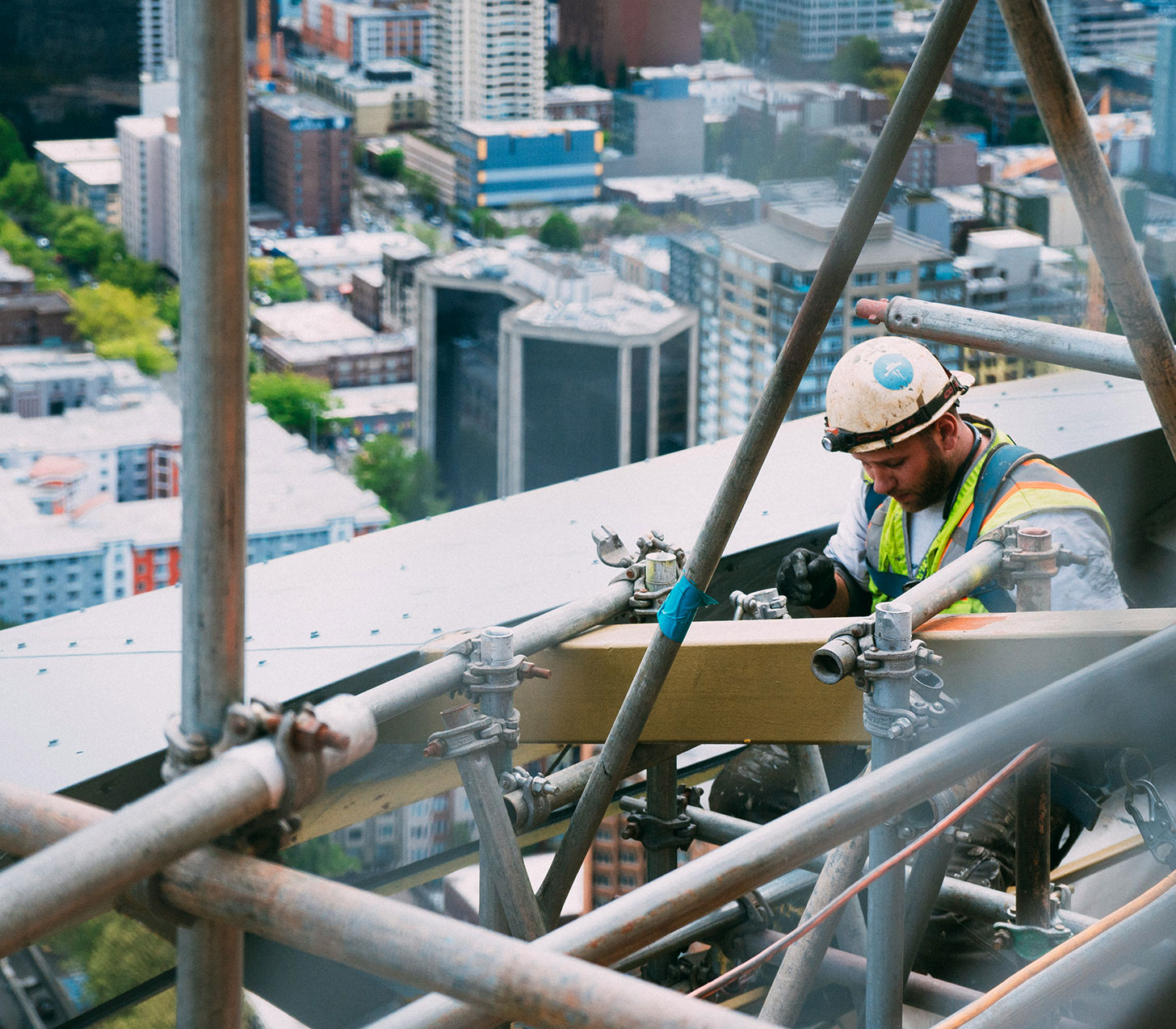
I recently had the opportunity to attend a construction industry roundtable discussion focused on sustainability hosted by Virginia Tech (VT). I learned about challenges that players in the built world face and ideas around ways to proactively move forward and pursue sustainability.
Carbon Dioxide Storage and Emissions
A VT partnership with industry has secured a federal grant from the Department of Energy to conduct feasibility studies (dubbed project CARDINAL) in which they will be drilling over one mile into the ground and seek to permanently store carbon dioxide in geologic formations similar to those that hold oil or natural gas. Upstream, carbon dioxide would be extracted from the emissions of power, cement, and chemical plants. Hearing about this basic science collaboration made me think about Grow Oyster Reefs, which shared an adjacent technology during Energy Tech 2024. They developed a proprietary calcium carbonate concrete mix that resembles oyster shells for reef and coastal shoreline restoration or protection.
Beyond the attention of emissions, industry stakeholders pointed out that there are also large opportunities with waste in the built world. Instead of carefully detonating a high-rise building so that it collapses quickly and safely, what would it look like to design buildings with deconstruction in mind and strive to foster circular economies?
Construction Materials
Building materials and construction account for an estimated 11% of global energy related carbon emissions. The carbon intensity of producing steel and concrete has led to exploration into alternative materials or processes.
An example alternative material: mass timber such as cross laminated timber (CLT), where kiln-dried boards are layered such that a given layer is against the grain of its neighbors. CLT performs as well as reinforced concrete slab and reduces construction time and waste because materials can be created exactly to specified dimensions. Depending on forestry management and supply chain practices, CLT will tend to be more sustainable because production emits less carbon and the growth of trees naturally sequesters carbon. As CLT is relatively new to the United States, costs are often higher than concrete or steel currently and building codes can pose a challenge.
An example process innovation for reducing the carbon intensity of concrete is to use electrolysis to produce an alternative to clinker, the binder used in many cement products made by heating up materials to 1,450°C (2,640°F). If paired with renewable energy to drive it, the use of an electrochemical process brings concrete production to zero carbon by eliminating the carbon dioxide released in the heating to make clinker and avoiding emissions from the fuel (often coal) used to generate the heat.
Industry voices remarked that the core drivers for selection of building materials include price, performance, or policy. Interesting technologies and solutions are being developed, but scaling and commercialization pose large hurdles. There seem to be ample opportunities for industry and academia to collaborate and experiment to prove out concepts. It would be interesting for a concept pipeline to be developed with a venture capital ecosystem for entities to take on the risks and challenges of bringing a concept to scale and commercializing it.
Construction Project Decisions and Operations
At times, construction players observe a disconnect between externally expressed commitments to sustainability and decision making with construction projects. Often, the primary factors guiding selection of construction material and building design are cost, time, and risks. Construction firms can present sustainable options to their clients, who make the final call.
Construction will tend to be focused on building the structure, but the costs of ongoing operations and maintenance are a factor for consideration for the building owner. Operational emissions of buildings represent an estimated 28% of global energy related carbon emissions.
Intentional design and building decisions such as wind towers and passive cooling or incorporating building management software and instrumentation that enable more granular controls for heating and cooling can reduce costs for building managers and decrease emissions. While LEED may be the most commonly thought of standard for green or efficient buildings, other standards have been developed with differing emphasis such as WELL (prioritizing health and safety), Phius CPHC (focused on energy), and LBC (for advanced sustainability and regenerative building design).
Closing Thoughts
I’m grateful for the opportunity to hear from a wide array of industry and academic professionals share perspectives and insights about the built world and conflicting pressures of seeking sustainable outcomes against the necessity to ensure successful build completion. I’m encouraged by the open discussions and repeated calls for collaboration. To get further with sustainability will require active engagement and participation from each entity across the entire value chain.
Loved the article? Hated it? Didn’t even read it?
We’d love to hear from you.




